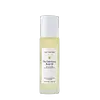What's inside
What's inside
 Key Ingredients
Key Ingredients

 Benefits
Benefits

 Concerns
Concerns

 Ingredients Side-by-side
Ingredients Side-by-side

Carthamus Tinctorius Seed Oil
MaskingRicinus Communis Seed Oil
MaskingCaprylic/Capric Triglyceride
MaskingSqualane
EmollientHydrogenated Ethylhexyl Olivate
EmollientCocos Nucifera Oil
MaskingCocos Nucifera Fruit Extract
EmollientSimmondsia Chinensis Seed Oil
EmollientTetrahexyldecyl Ascorbate
AntioxidantHippophae Rhamnoides Fruit/Seed Oil
AntimicrobialLinoleic Acid
CleansingPhospholipids
Skin ConditioningPhytosterols
Skin ConditioningRosa Canina Fruit Oil
EmollientVanilla Planifolia Fruit Extract
Skin ConditioningHydrogenated Olive Oil Unsaponifiables
EmollientGamma-Decalactone
PerfumingBenzotriazolyl Dodecyl P-Cresol
UV AbsorberGamma-Nonalactone
MaskingDelta-Decalactone
MaskingDelta-Dodecalactone
PerfumingGamma-Dodecalactone
PerfumingGamma-Undecalactone
PerfumingLimonene
PerfumingCarthamus Tinctorius Seed Oil, Ricinus Communis Seed Oil, Caprylic/Capric Triglyceride, Squalane, Hydrogenated Ethylhexyl Olivate, Cocos Nucifera Oil, Cocos Nucifera Fruit Extract, Simmondsia Chinensis Seed Oil, Tetrahexyldecyl Ascorbate, Hippophae Rhamnoides Fruit/Seed Oil, Linoleic Acid, Phospholipids, Phytosterols, Rosa Canina Fruit Oil, Vanilla Planifolia Fruit Extract, Hydrogenated Olive Oil Unsaponifiables, Gamma-Decalactone, Benzotriazolyl Dodecyl P-Cresol, Gamma-Nonalactone, Delta-Decalactone, Delta-Dodecalactone, Gamma-Dodecalactone, Gamma-Undecalactone, Limonene
 Reviews
Reviews

Ingredients Explained
These ingredients are found in both products.
Ingredients higher up in an ingredient list are typically present in a larger amount.
This ingredient is an emollient, solvent, and texture enhancer. It is considered a skin-softener by helping the skin prevent moisture loss.
It helps thicken a product's formula and makes it easier to spread by dissolving clumping compounds.
Caprylic Triglyceride is made by combining glycerin with coconut oil, forming a clear liquid.
While there is an assumption Caprylic Triglyceride can clog pores due to it being derived from coconut oil, there is no research supporting this.
Learn more about Caprylic/Capric TriglycerideLimonene is a fragrance that adds scent and taste to a formulation.
It's found in the peel oil of citrus fruits and other plants such as lavender and eucalyptus. The scent of limonene is generally described as "sweet citrus".
Limonene acts as an antioxidant, meaning it helps neutralize free radicals.
When exposed to air, oxidized limonene may sensitize the skin. Because of this, limonene is often avoided by people with sensitive skin.
The term 'fragrance' is not regulated in many countries. In many cases, it is up to the brand to define this term. For instance, many brands choose to label themselves as "fragrance-free" because they are not using synthetic fragrances. However, their products may still contain ingredients such as essential oils that are considered a fragrance.
Learn more about LimoneneThis oil comes from the seeds of the desert shrub called Jojoba. It is more commonly known as jojoba oil, a non-comedogenic oil.
Jojoba oil does not contain fragrance and has many fatty-acids, making it a great soothing ingredient.
It also contains Vitamin E, a great moisturizing ingredient. Vitamin E is also an antioxidant and protects your skin against oxidative damage.
This ingredient humectant properties, meaning it helps draw moisture from the air. This helps keep your skin hydrated.
While jojoba has antibacterial properties, it is only able to kill some strains of bacteria.
Studies also show it helps in wound healing. In fact, Indigenous cultures have used jojoba as a moisturizer and to help treat burns for centuries.
Fun fact: Jojoba oil similar to natural human skin sebum, so it has a great effect on dry skin. It is also promising with helping to regulate sebum production.
Due to its fatty acid content, Jojoba oil may not be fungal acne safe. We recommend speaking with a professional if you have any concerns.
Learn more about Simmondsia Chinensis Seed Oil